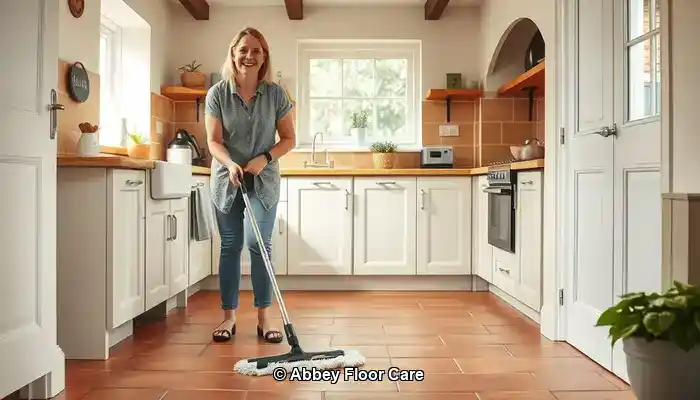
Last Updated on September 29, 2025 by David
Essential Strategies for Achieving Immaculate Terracotta Flooring
-
- Discover the Unique Porous Nature of Terracotta and Its Effects on Cleanliness—The highly porous composition of terracotta allows it to quickly absorb dirt and grime, especially prevalent in humid regions such as Surrey.
- Recognise the Critical Role of Effective Sealing for Optimal Protection—To efficiently block moisture and dirt from infiltrating the tile surface, applying a quality sealant is crucial.
- Prioritise Regular Cleaning for Enhanced Longevity—Daily sweeping and weekly mopping using pH-neutral cleaners is essential for maintaining the tiles’ stunning aesthetic.
- Avoid Harmful Chemicals and Steam Cleaning Tools—These can compromise sealants and negatively impact the tile surfaces.
- Choose Eco-Friendly Cleaning Products—This is crucial for households with children or pets, ensuring a safe living environment.
- Consider Professional Restoration Services—Investing in expert deep cleaning and resealing can provide enduring protection for your floors.
- Use Rugs and Mats Wisely for Effective Dirt Control—Strategically placing rugs in busy areas can drastically reduce the transfer of dirt onto your tiles.
- Implement Effective Moisture Management Techniques—Ensuring adequate ventilation and promptly addressing spills is vital to prevent staining and mould formation.
Understanding Why Terracotta Floors Accumulate Dirt Rapidly
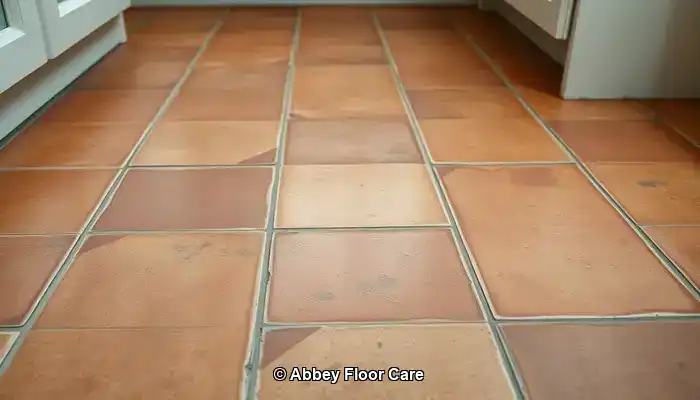
Terracotta tiles present an exquisite flooring option, particularly suited to traditional or rustic-style residences across Surrey. With their warm hues and organic textures, these tiles create a welcoming ambiance in any room, making them visually appealing. However, terracotta is known for its tendency to quickly accumulate dirt, which can detract from its natural beauty. Understanding the underlying factors contributing to this issue is the essential first step in maintaining a clean and attractive appearance.
Expert Tips for Daily Care of Your Terracotta Floors
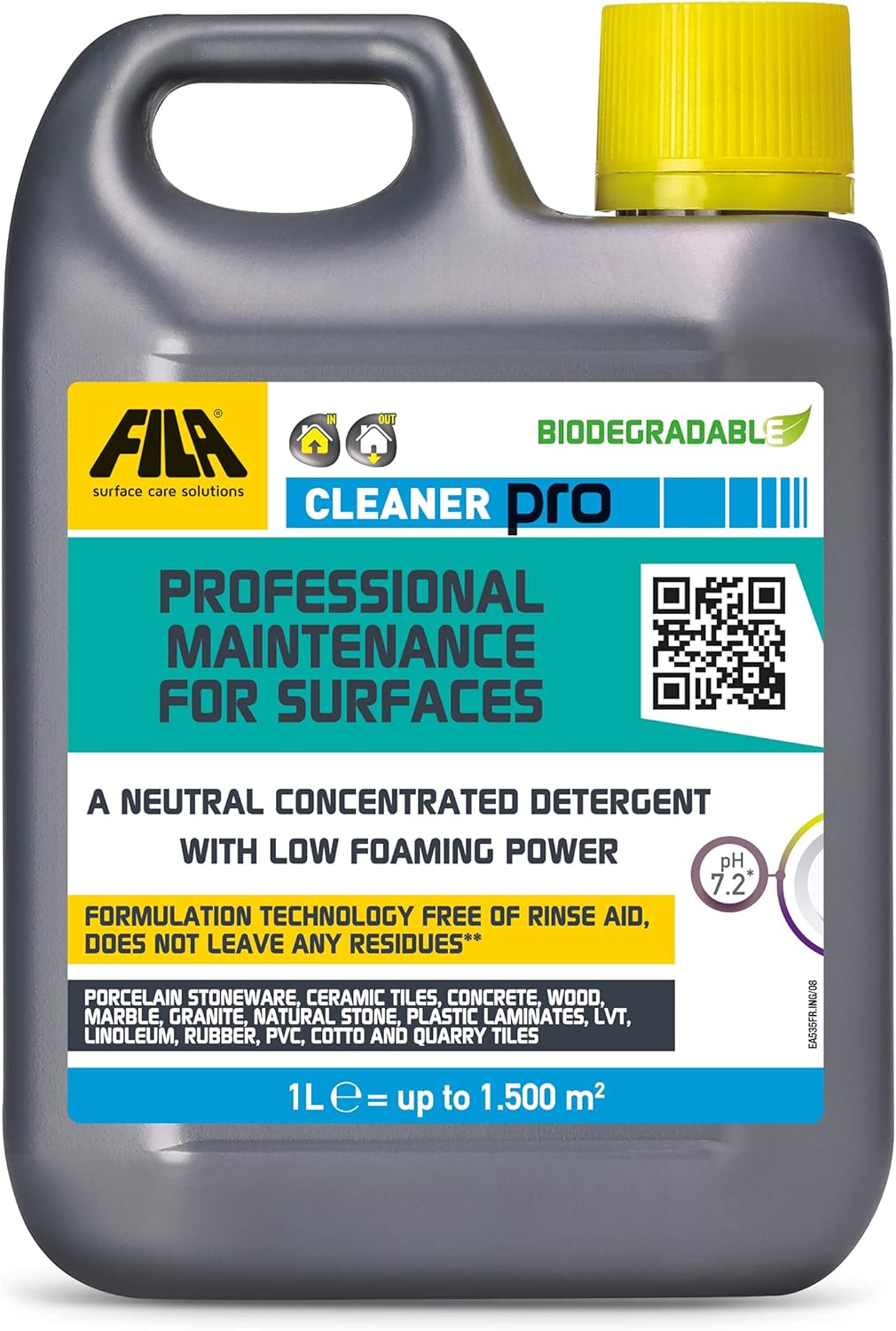
Fila Pro Floor Cleaner
|
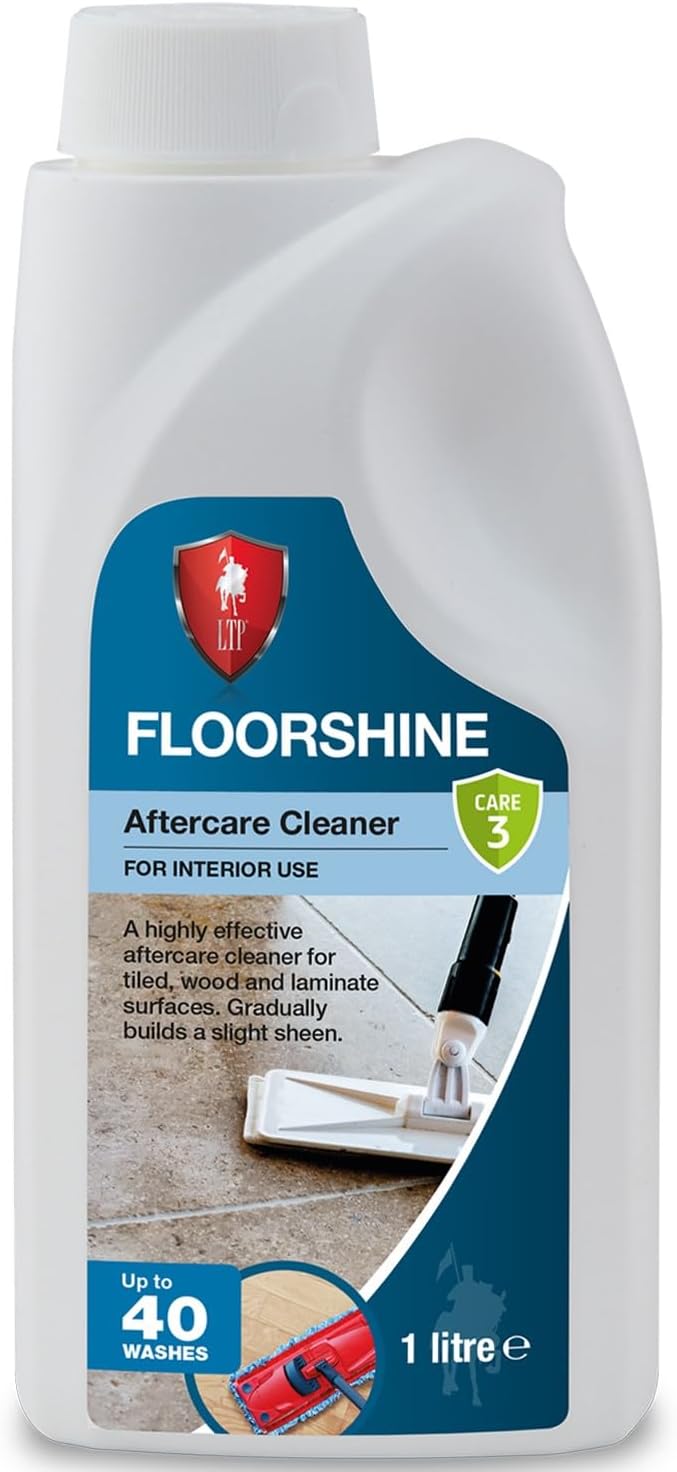
LTP Floorshine
|
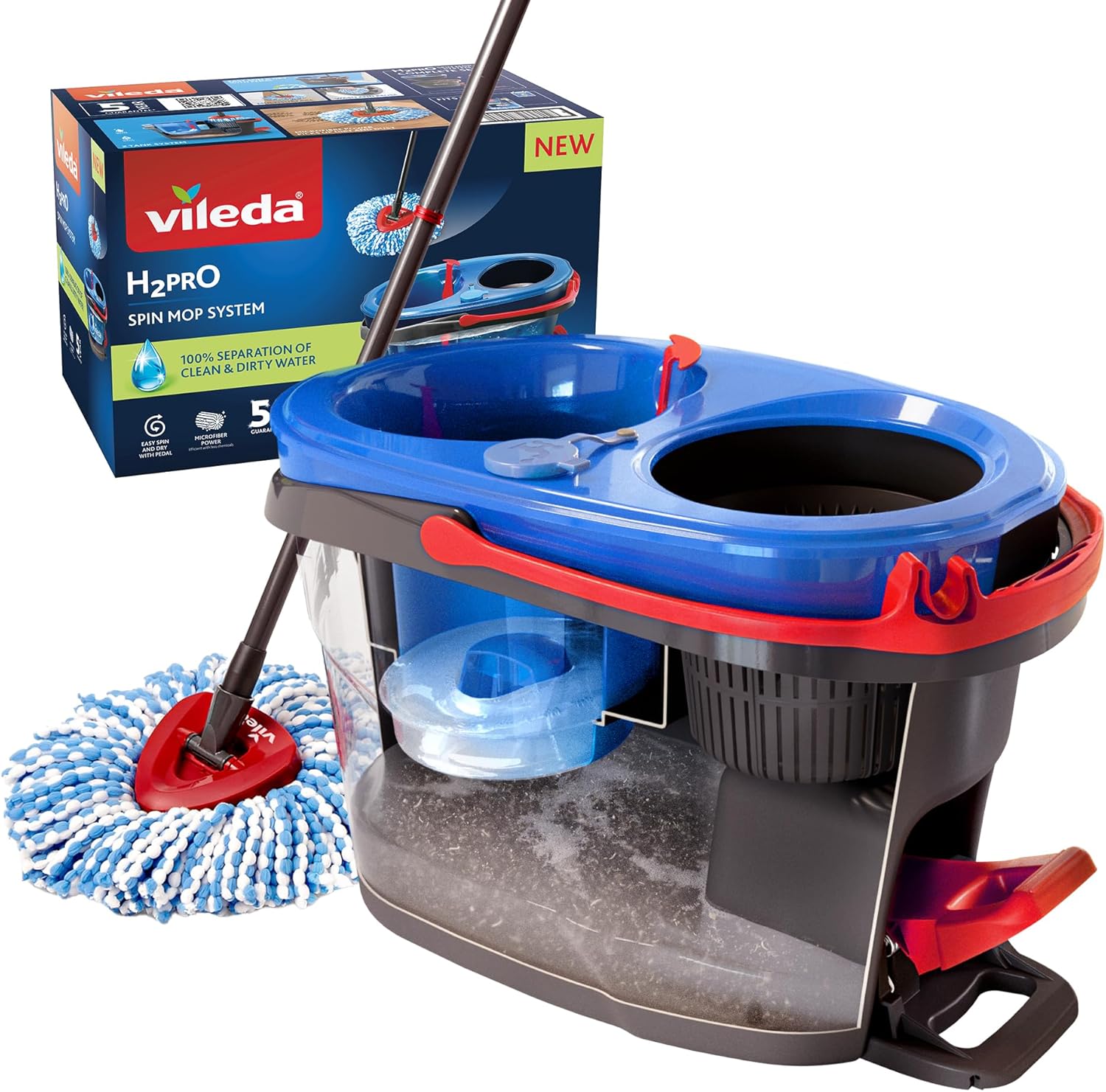
Vileda H2PrO Spin Mop System
|
The Impact of Porosity on Dirt Accumulation: A Comprehensive Analysis
Terracotta is made from natural clay and is subjected to lower firing temperatures as compared to other tile varieties, resulting in a porous surface that acts like a sponge, soaking up moisture, oils, and dirt. This porosity enables grime to infiltrate deeply into the tile, making it increasingly difficult to clean with standard cleaning methods. Without adequate sealing, terracotta tiles become even more vulnerable, as minor spills or muddy footprints can leave enduring stains. Over time, this can result in a dull, stained appearance that may necessitate professional cleaning to restore its original luster.
How Does Surrey’s Climate Affect the Cleanliness of Terracotta Floors?
The weather patterns in Surrey have a direct influence on how quickly terracotta floors attract dirt. The area experiences regular rainfall and damp conditions, leading to increased moisture being tracked indoors, particularly in entryways and conservatories. Homes located close to wooded areas or gardens are even more susceptible to dirt accumulation, as soil, pollen, and organic debris can easily transfer onto terracotta surfaces, especially if outdoor footwear is not removed upon entering. This constant influx of external elements can accelerate the gathering of dirt on your beautiful terracotta tiles.
Daily Habits Contributing to Rapid Dirt Build-Up on Terracotta
Alongside environmental factors, daily practices can worsen dirt accumulation on terracotta tiles. Utilising inappropriate cleaning agents, such as acidic solutions or bleach, can strip protective coatings and damage the tile surface. While steam mops are often favoured for their convenience, they may push moisture deeper into the tile, exacerbating the issue. High-traffic areas like kitchens and hallways naturally experience more wear and tear. Without consistent sweeping and mopping, dirt can rapidly become entrenched within the texture of the tile, complicating future cleaning efforts.
Proven Techniques for Keeping Terracotta Floors Spotless
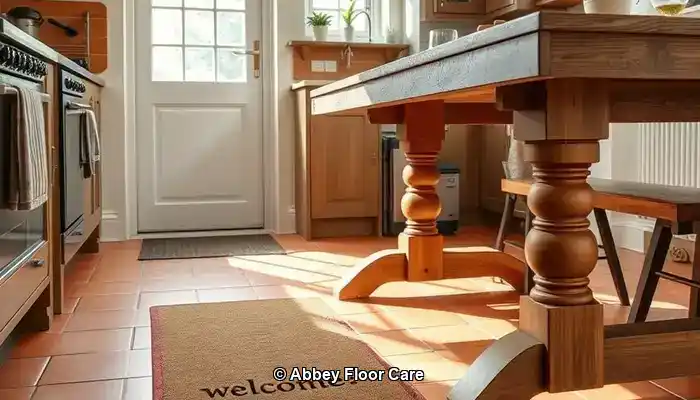
Maintaining the cleanliness of terracotta floors transcends merely reacting to dirt; it fundamentally involves preventing it from settling in the first place. In homes throughout Surrey, where dampness and garden traffic are commonplace, proactive maintenance is essential for preserving the inherent beauty of terracotta tiles.
Utilising Proper Sealing as the First Line of Defence Against Dirt
The most effective strategy to stop terracotta from getting dirty quickly is to apply a high-quality sealant properly. A breathable sealant forms a barrier that repels moisture, oils, and grime. In Surrey, where humidity can fluctuate, sealing is crucial to prevent water absorption that may lead to staining and mould development. Experts suggest resealing terracotta every 12 to 18 months, depending on foot traffic and exposure conditions. In high-use areas like kitchens, hallways, and conservatories—where daily activities are prevalent—more frequent sealing may be required. Always choose a sealant specifically designed for porous stone and avoid glossy finishes, as these can trap dirt on the surface.
Smart Placement of Rugs and Mats to Minimise Dirt Transfer
Carefully positioning rugs and mats can drastically curtail the amount of dirt that reaches your terracotta tiles. Heavy-duty doormats at entrances act as barriers, capturing mud and moisture before they enter your home. In frequently used areas like hallways or under dining tables, area rugs offer a protective cushion, safeguarding the tiles from wear and tear. For spaces that connect to the outdoors, consider using washable runners that can be cleaned regularly. These enhancements not only help maintain the integrity of the tile but also add warmth and aesthetic appeal to your home.
Strategies for Managing Moisture in Surrey Homes
Given Surrey’s reputation for wet weather, moisture can accelerate dirt accumulation on terracotta. To combat this, employ dehumidifiers in enclosed areas and ensure proper ventilation throughout your home. Always clean up spills immediately and refrain from leaving wet items—such as shoes or towels—on the floor. If your terracotta is laid in a conservatory or garden room, consider adding blinds or UV filters to minimise condensation and prevent sun damage. Implementing these minor adjustments can significantly influence the longevity of your tiles.
By integrating effective sealing, thoughtful design choices, and moisture management strategies, homeowners in Surrey can greatly lessen the rate at which dirt accumulates on terracotta floors. The upcoming section will explore the best cleaning practices to maintain that fresh, natural look day after day.
The Most Effective Cleaning Practices for Terracotta Tiles
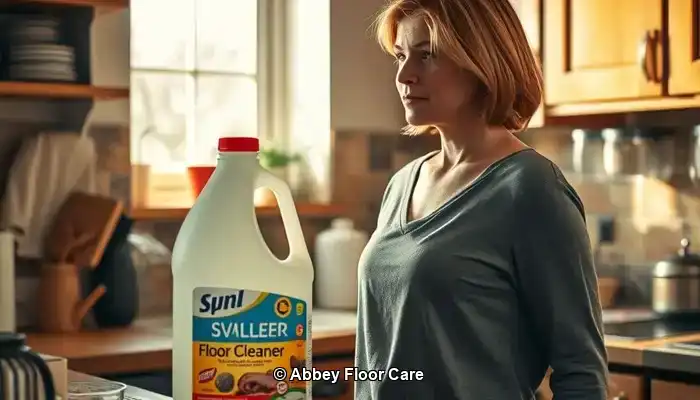
Regardless of appropriate sealing and preventive care, terracotta floors require regular upkeep to maintain their natural beauty. The secret lies in using the right techniques and products that effectively clean without damaging the porous surface of the tiles.
Establishing a Regular Cleaning Routine for Daily and Weekly Care
In homes across Surrey, where outdoor elements frequently invade, daily sweeping or vacuuming is essential. Employ a soft-bristle broom or a vacuum equipped with a hard floor setting to remove dust, grit, and organic debris before it settles into the tiles. For weekly cleaning, mop the floors using warm water combined with a pH-neutral cleaner specifically designed for natural stone. Avoid soaking the floor; a damp mop works best. Excessive water can seep into the tile, leading to staining or mould growth, particularly in older or inadequately sealed installations.
Selecting the Right Cleaning Products for Optimal Terracotta Care
Choosing the most appropriate cleaning products is vital for effective maintenance. Look for labels that specify “stone-safe,” “non-acidic,” or “pH-neutral.” In Surrey, where eco-conscious living is increasingly valued, many homeowners prefer biodegradable cleaners that are safe for both pets and children. Steer clear of multi-surface cleaners containing bleach, ammonia, or citrus extracts, as these can strip away sealants and etch the surface of the terracotta, leaving it more susceptible to future stains. For stubborn spots, use a soft cloth alongside a diluted solution of stone cleaner. Avoid scrubbing with abrasive pads or wire brushes, as these can scratch the surface and complicate future cleaning efforts.
Cleaning Methods to Avoid: Harmful Chemicals and Steam Cleaning
While steam mops may seem like a convenient option, they are ill-suited for terracotta. The combination of high temperature and moisture can penetrate the tile, weakening the sealant and causing long-term damage. Similarly, acidic cleaners like vinegar or lemon juice—even when diluted—can erode the tile’s surface and lead to discolouration. Stick to gentle cleaning methods and always conduct a test on a small, inconspicuous area before applying new products to the entire surface.
Choosing Between Professional Care and DIY for Your Terracotta Floors
For many homeowners in Surrey, the journey of maintaining terracotta floors often begins with DIY methods. While consistent sweeping and mopping are beneficial, there may come a time when professional intervention becomes necessary.
When to Consult a Tile Specialist in Surrey
If your terracotta tiles show signs of deep staining, uneven colour, or surface wear, it may be time to consider enlisting professional help. Tile care specialists in Surrey employ advanced equipment and stone-safe products that penetrate deeper than typical household cleaners. They can assess whether your sealant has deteriorated and recommend a resealing schedule tailored specifically to your home’s conditions. Restoration services often include deep cleaning, stain elimination, and reapplication of breathable sealants that protect while maintaining the tile’s natural aesthetic. For older homes or heritage properties, specialists can replicate the original finish to preserve authenticity.
Evaluating the Cost versus Benefits: Is Professional Help Worth It?
While DIY cleaning may appear more cost-effective, it often leads to short-lived results. Inadequate sealing and deep cleaning can allow dirt to continue accumulating, necessitating more frequent maintenance and risking irreversible damage. Conversely, professional care can extend the lifespan of your terracotta floors. A single restoration session can refresh colours, remove embedded dirt, and safeguard the surface for months or even years. In high-traffic areas like kitchens or hallways, this investment pays off through reduced maintenance and enhanced visual appeal. Homeowners in Surrey who value long-term property preservation and aesthetic appeal often find that expert services yield superior results and peace of mind. Many local providers now also offer eco-friendly options and customised maintenance plans to suit your lifestyle.
Finding Safe and Eco-Friendly Cleaning Solutions for Terracotta Floors
The natural allure of terracotta deserves care that aligns with its earthy essence. For homeowners in Surrey aiming to maintain clean floors without compromising health or environmental sustainability, opting for eco-friendly cleaning is the ideal solution. Fortunately, advancements in modern products and techniques make it possible to protect your tiles and your household without resorting to harsh chemicals.
Choosing Non-Toxic Sealants and Cleaners for Safe Maintenance
Traditional sealants often contain solvents that release volatile organic compounds (VOCs), which can linger in indoor environments and negatively affect air quality. Modern eco-friendly alternatives utilise water-based formulations that are low in VOCs and safe for homes with children and pets. When selecting a cleaner, look for labels indicating “biodegradable,” “plant-based,” or “stone-safe.” These products are designed to lift dirt without harming the porous surface of terracotta. Brands that specialise in natural stone care frequently offer concentrated solutions that can be diluted for everyday use, helping to reduce waste and packaging.
Finding Safe Cleaning Options for Families with Children and Pets
In busy households throughout Surrey, safety is paramount alongside cleanliness. Avoid bleach, ammonia, and acidic cleaners like vinegar, as these can harm the tile and pose risks to pets and young children. Instead, choose gentle formulations derived from coconut oil, citrus enzymes, or mineral-based ingredients. For those who prefer DIY solutions, a simple mixture of warm water with a few drops of castile soap can effectively tackle light cleaning tasks. However, always test any homemade solution on a small area first to ensure it does not affect the sealant or finish.
Embracing Sustainable Cleaning Practices for Long-Term Care
Eco-friendly care goes beyond just products; it encompasses maintenance routines as well. Utilise reusable microfiber cloths and mops instead of disposable options. Regular sweeping can significantly reduce the need for frequent wet cleaning. When resealing, opt for products with recyclable packaging that minimise environmental impact. Many floor care professionals in Surrey now provide green cleaning packages, employing certified non-toxic products and sustainable methods. If unsure where to start, scheduling a consultation with a local expert can help you develop a routine that is both effective and eco-conscious.
Ensuring Your Terracotta Floors Remain Visually Stunning
Terracotta flooring adds warmth, character, and timeless beauty to homes in Surrey. However, its porous nature demands dedicated care to maintain a clean and vibrant appearance. By understanding why terracotta becomes dirty quickly, applying the correct sealant, and adopting intelligent cleaning habits, you can significantly reduce grime accumulation and enhance the longevity of your tiles.
Whether managing a bustling household or restoring a historical property, consistency is vital. Daily sweeping, employing pH-neutral cleaning solutions, and resealing regularly will greatly contribute to maintaining a pristine surface. Should stains or wear become noticeable, do not hesitate to reach out to a local specialist for professional restoration.
Utilising eco-friendly products and safe cleaning practices will also ensure your floors remain beautiful without compromising your health or the environment. With the right approach, terracotta can continue to be a stunning feature in your home for many years to come.
Are you prepared to effectively safeguard your floors? <a href=”https://www.abbeyfloorcare.co.uk/home-garden/porcelain-tile-repair-near-me-east-calder/”>Contact us today</a> for expert terracotta maintenance tailored to the unique conditions of Surrey. Let us help you keep your home looking its best—naturally.
Frequently Asked Questions Regarding Terracotta Maintenance
Terracotta floors are timeless, yet they require specific care to maintain their beauty. Below are answers to the most commonly asked questions from homeowners in Surrey who wish to keep their tiles clean, protected, and visually appealing.
How Frequently Should I Reseal My Terracotta Tiles?
Typically, terracotta tiles in most Surrey homes should be resealed every 12 to 18 months. However, this timeframe may vary based on factors such as foot traffic, moisture exposure, and whether the tiles are situated indoors or outdoors. High-traffic areas like kitchens, hallways, and conservatories may necessitate more frequent resealing. If you notice that your tiles are absorbing water or appear dull, it is time to reseal them.
Is It Safe to Use Vinegar or Bleach on Terracotta?
No, vinegar, bleach, and other acidic or abrasive cleaners can damage terracotta. These substances can degrade sealants and etch the tile surface, leading to irreversible discolouration. Always utilise pH-neutral, stone-safe cleaners designed specifically for porous flooring.
What Is the Best Mop for Cleaning Terracotta Floors?
A microfiber mop is ideal for cleaning terracotta. It effectively captures dust and dirt without scratching the surface and requires minimal water, which is crucial for porous tiles. Avoid sponge mops or steam mops, as these can oversaturate the tile and weaken the sealant.
Are DIY Cleaning Solutions Safe to Use?
Yes, provided you are cautious. A mild mixture of warm water and castile soap can be effective for light cleaning. Always test any homemade solution on a small, hidden area first. Avoid using anything acidic or abrasive, and never apply homemade cleaners to unsealed tiles.
What Should I Do If My Tiles Are Already Stained?
If stains are present, professional restoration services are the most reliable solution. Tile care specialists in Surrey can perform deep cleaning, remove embedded dirt, and reseal the surface to restore the tiles’ original colour and texture. DIY methods may worsen the damage if inappropriate products are used.
The Article Tired of Dirty Terracotta? How to Keep It Clean Longer first found on https://www.abbeyfloorcare.co.uk
The Article Keeping Terracotta Clean: Tips for Lasting Freshness appeared first on https://fabritec.org
The Article Terracotta Clean: Tips for Long-Lasting Freshness Was Found On https://limitsofstrategy.com


